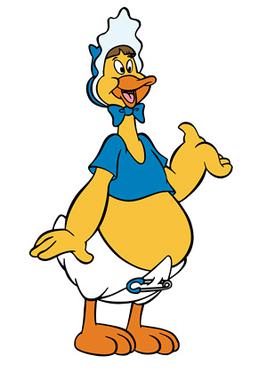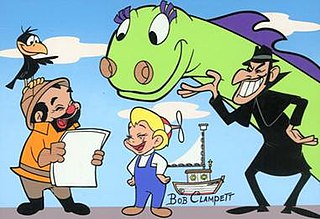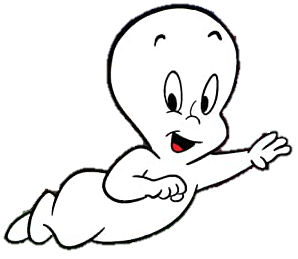
Mattel, Inc. is an American multinational toy manufacturing and entertainment company founded in Los Angeles by Harold Matson and the husband-and-wife duo of Ruth and Elliot Handler in January 1945 and headquartered in El Segundo, California. Mattel has a presence in 35 countries and territories; its products are sold in more than 150 countries. Mattel consists of three business segments: North America, International and American Girl.

Barbie is a fashion doll created by American businesswoman Ruth Handler, manufactured by American toy and entertainment company Mattel and introduced on March 9, 1959. The toy was based on the German Bild Lilli doll which Handler had purchased while in Europe. The figurehead of an eponymous brand that includes a range of fashion dolls and accessories, Barbie has been an important part of the toy fashion doll market for over six decades. Mattel has sold over a billion Barbie dolls, making it the company's largest and most profitable line. The brand has expanded into a multimedia franchise since 1984, including video games, animated films, television/web series, and a live-action film.

Kenneth Sean "Ken" Carson Jr. is a fashion doll introduced by American toy company Mattel in 1961 as the counterpart of Barbie, who had been introduced two years earlier.

Robert Emerson Clampett Sr. was an American animator, director, producer and puppeteer best known for his work on the Looney Tunes animated series from Warner Bros. as well as the television shows Time for Beany and Beany and Cecil. He was born and raised not far from Hollywood and, early in life, showed an interest in animation and puppetry. After dropping out of high school in 1931, he joined the team at Harman-Ising Productions and began working on the studio's newest short subjects, Looney Tunes and Merrie Melodies.

Ruth Marianna Handler was an American businesswoman and inventor. She is best known for inventing the Barbie doll in 1959, and being co-founder of toy manufacturer Mattel with her husband Elliot, as well as serving as the company's first president from 1945 to 1975.

Monchhichi is a line of Japanese stuffed monkey toys from the Sekiguchi Corporation, first released in 1974. They were licensed by Mattel in the United States until 1985, and later distributed worldwide directly by Sekiguchi. Five television series were produced based on the characters: The Japanese anime series Monchhichi Twins in 1980, produced by Tokyo 12 Channel, the American cartoon series Monchhichis in 1983, produced by Hanna-Barbera Productions, the French cartoon series Kiki, le Kiki de tous les Kiki in 2001, produced by Ben-J Productions, the Japanese stop-motion series Monchhichi in 2005, by Kids Station and the French CGI series Monchhichi Tribe in 2017, produced by Technicolor Animation Productions.
The following is the 1961–62 network television schedule for the three major English language commercial broadcast networks in the United States. The schedule covers primetime hours from September 1961 through April 1962. The schedule is followed by a list per network of returning series, new series, and series cancelled after the 1960–61 season.

Baby Huey is a gigantic and naïve duckling cartoon character. He was created by Martin Taras for Paramount Pictures' Famous Studios, and became a Paramount cartoon star during the 1950s. Huey first appeared in Quack-a-Doodle-Doo, a Noveltoon theatrical short produced and released in 1950.

Beany and Cecil is an American animated television series created by Bob Clampett for the American Broadcasting Company. The cartoon was based on the television puppet show Time for Beany, which Clampett produced for Paramount Pictures company and its Paramount Television Network beginning 1949. The series was broadcast first as part of the series Matty's Funnies during 1962, later renamed Beany and Cecil. A short-lived revival, The New Adventures of Beany and Cecil, was produced in 1988.
Chatty Cathy was a pull-string "talking" doll originally created by Ruth and Elliot Handler and manufactured by the Mattel toy company from 1959 to 1965. The doll was first released in stores and appeared in television commercials beginning in 1960, with a suggested retail price of $18.00, though usually priced under $10.00 in catalog advertisements. Chatty Cathy was on the market for six years and was the second most popular doll of the 1960s after Barbie.
Charmin' Chatty was a doll produced by the toy company Mattel in 1963 and 1964. The doll, introduced at the American Toy Fair in New York City in March 1963, belonged to a line of highly successful talking dolls introduced in 1960. Other chatty dolls in the line were Chatty Baby (1962), Tiny Chatty Baby (1963), Tiny Chatty Brother (1963) and Singin' Chatty (1965). Mattel trademarked the word chatty in the 1960s, and some of the packaging for its talking toys carried the tag line, "A Chatty doll by Mattel" or "A Chatty toy by Mattel". Mattel dolls such as Drowsy, Baby Cheryl, and Tatters had the tag line on their boxes that said, "A Chatty Doll by Mattel."

Harvey Films was the production arm of comic book publisher Harvey Comics. It was founded in 1957.

Matty's Funday Funnies is a 1959–1961 American animated anthology television series.

The Bild Lilli doll was a West German line of fashion doll launched by Greiner & Hausser GmbH on August 12, 1955 and produced until 1964. Its design was based on the comic-strip character Lilli, created by Reinhard Beuthien for the tabloid newspaper Bild. The doll was made of polystyrene, came in two sizes, and had an available wardrobe of 1950s fashion. The Lilli doll was copied, and altered to some degree, for Mattel upon the direction of that company's co-founder, Ruth Handler. Mattel acquired the rights to Bild Lilli in 1964, and production of the German doll ceased in favor of Mattel's new vinyl doll, which they called Barbie.
Liddle Kiddles were dolls originally produced by toymaker Mattel Inc. in 1965. They were introduced at the New York Toy Fair in 1966 and put on the market soon after. Initially about 3 inches tall, they were small by doll standards. The sensation surrounding the dolls may have influenced other toy companies to produce their own tiny dolls.
Elliot Handler was an American inventor, businessman, and the co-founder of Mattel. With his wife, Ruth Handler, he developed some of the biggest-selling toys in American history, including Barbie, Chatty Cathy, Creepy Crawlers, and Hot Wheels.

Casper the Friendly Ghost is the fictional character who serves as the protagonist of the Famous Studios theatrical animated cartoon series of the same name. He is a translucent ghost who is pleasant and personable, but often criticized by his three wicked uncles, the Ghostly Trio.
Princess of Power is a toyline created by Mattel. Among others, it features the characters of She-Ra and Catra on planet Etheria. With its launch in 1984, the toyline spawned a variety of products, including three lines of fashion action figures. The Princess of Power logo and characters are currently used by Mattel as part of the Masters of the Universe Classics toyline.
James Andrew MacGeorge was an American voice actor, puppeteer, stand-up comedian and writer. He is also credited Jim McGeorge and James MacGeorge.









